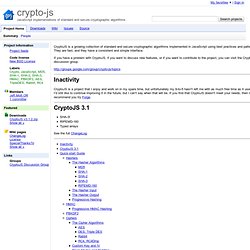

Flight by Twitter. Mailcheck.js. FlowType.js. Hammer.js. Offline.js. What is Offline.js?

Offline.js is a library to automatically alert your users when they've lost internet connectivity, like Gmail. It captures AJAX requests which were made while the connection was down, and remakes them when it's back up, so your app reacts perfectly. It has a number of beautiful themes and requires no configuration. Install The easiest way to add Offline to your site is with Eager. Click Install to see a live preview of Offline on your website. Download. Lena.JS. Pixel to pixel: grayscale sepia thresholding-128 invert saturation red green blue edge/line detection: roberts sharpen sobel y sobel x highpass laplacian gaussian prewitt y prewitt x Drag and drop filters hereremove all filters.

Moment.js. Pdf.js. iScroll 4. Project info Last code update: 2012.07.14 – v4.2Device compatibility: iPhone/Ipod touch >=3.1.1, iPad >=3.2, Android >=1.6, Desktop Webkit, Firefox, Opera desktop/mobile.Discussion groupQR Code opens demo page.

Support development If this script saved your day and you wish to support future developments you may consider sending some funds via PayPal or Flattr. Overview iScroll 4 is a complete rewrite of the original iScroll code. While latest Android revisions are supporting this functionality (although support is not optimal), Apple seems reluctant to add one finger scrolling to divs. In addition to all previous iScroll features, version 4 introduces: Pinch / ZoomPull up/down to refreshImproved speed and momentumSnap to elementCustomizable scrollbars Please note that iScroll 4 is not a drop-in replacement for iScroll 3. Also consider that the script is still in beta, and some APIs may slightly change. Getting started In the archive you’ll find plenty of examples to get you started.
Lunr.js. Crypto-js. CryptoJS is a growing collection of standard and secure cryptographic algorithms implemented in JavaScript using best practices and patterns.

They are fast, and they have a consistent and simple interface. If you have a problem with CryptoJS, if you want to discuss new features, or if you want to contribute to the project, you can visit the CryptoJS discussion group. CryptoJS is a project that I enjoy and work on in my spare time, but unfortunately my 9-to-5 hasn't left me with as much free time as it used to. I'd still like to continue improving it in the future, but I can't say when that will be. If you find that CryptoJS doesn't meet your needs, then I'd recommend you try Forge.
SHA-3! See the full ChangeLog. Hashers The Hasher Algorithms. Intro.js. Foundation. UIkit. PhantomJS. Datejs. Last updated 2008-04-14 Datejs is an open source JavaScript Date library for parsing, formatting and processing.

The last 'official' release was Alpha-1 on November 19th, 2007. The project has been under active development since that time and many revisions and additions have occurred. It is highly recommended that you obtain a copy of the latest source from SVN. Technical support is provided through the Datejs Discussion Group. A test suite is available within SVN (/trunk/test/) or viewable online at View Change Log. NOTE Please be sure to check out our blog post "Getting Started with Datejs". We recommend including one of the .js files from within the /build/ folder.
Within the /build/ folder, a date.js file has been created for each of the 150+ supported Cultures. Before minification, the Datejs library is contained in five (6) separate JavaScript files. The following is a list of precedence if including the files individually. Numeral.js. Parallel.js. Parallel Computing with Javascript Parallel.js is a tiny library for multi-core processing in Javascript.

It was created to take full advantage of the ever-maturing web-workers API. Javascript is fast, no doubt, but lacks the parallel computing capabilites of its peer languages due to its single-threaded computing model. In a world where the numbers of cores on a CPU are increasing faster than the speed of the cores themselves, isn't it a shame that we can't take advantage of this raw parallelism?